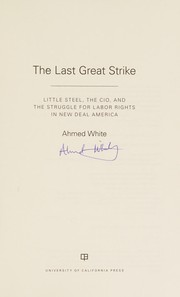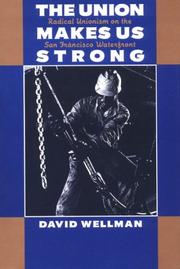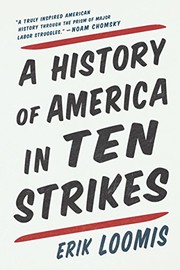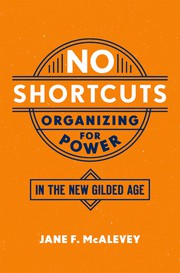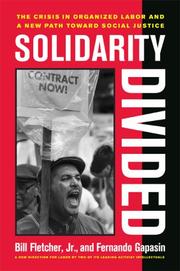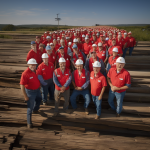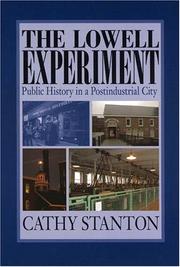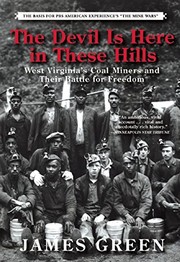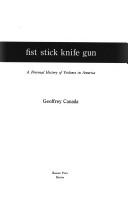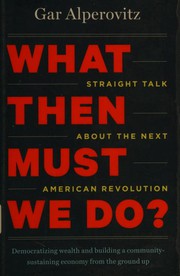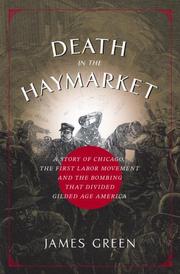Looking to dive into the world of labor unions? Whether you’re a union member, a labor organizer, or simply interested in the history and impact of unions, there are plenty of books out there that delve into the complexities and significance of organized labor. From historical accounts to contemporary analyses, these 20 best books about unions offer a comprehensive look at the challenges, victories, and ongoing relevance of labor movements. Get ready to explore the power dynamics, social justice, and economic implications of unions through the pages of these insightful books on unions.
Contents
- 1 20 Best Books About Unions
- 2 The Fight for Fifteen: The Right Wage for a Working America
- 3 The Big Squeeze: Tough Times for the American Worker
- 4 The Last Great Strike: Little Steel, the CIO, and the Struggle for Labor Rights in New Deal America
- 5 The Fall of the House of Labor: The Workplace, the State, and American Labor Activism, 1865-1925
- 6 The Union Makes Us Strong: Radical Unionism on the San Francisco Waterfront
- 7 The Fight for $15: The Right Wage for a Working America
- 8 A History of America in Ten Strikes
- 9 No Shortcuts: Organizing for Power in the New Gilded Age
- 10 The Fight in the Fields: Cesar Chavez and the Farmworkers Movement
- 11 Solidarity Divided: The crisis in organized labor and a new path toward social justice
- 12 The Lowell Experiment: Public History in a Postindustrial City
- 13 Reviving the Strike: How Working People Can Regain Power and Transform America
- 14 The Devil Is Here in These Hills: West Virginia’s Coal Miners and Their Battle for Freedom
- 15 Fist Stick Knife Gun: A Personal History of Violence
- 16 What Then Must We Do? Straight Talk about the Next American Revolution
- 17 The Blood of Emmett Till
- 18 Death in the Haymarket: A Story of Chicago, the First Labor Movement and the Bombing that Divided Gilded Age America
- 19 The Fall of Wisconsin: The Conservative Conquest of a Progressive Bastion and the Future of American Politics
- 20 The Union of Their Dreams: Power, Hope, and Struggle in Cesar Chavez’s Farm Worker Movement
- 21 Union Power: The United Electrical Workers in Erie, Pennsylvania
- 22 Conclusion
- 23
- 24 Explore 20 Best Harry Potter Books with Our 2024 Update
- 25 Top 20 Best Books on High School:2024 Edition
- 26 Books about Disabilities For Adults: 2024's Best Titles
20 Best Books About Unions
The Fight for Fifteen: The Right Wage for a Working America
by David Rolf
The Fight for Fifteen: The Right Wage for a Working America by David Rolf is a compelling book about the movement for fair wages in America. Rolf, a prominent labor leader, presents a powerful argument for raising the minimum wage to $15 an hour. He delves into the history of labor movements and explores the impact of low wages on individuals and society. This insightful book on unions sheds light on the struggles of workers and the need for economic justice. Rolf’s passionate and well-researched writing makes this a must-read for anyone interested in social justice, labor rights, and the fight for a living wage.
The Big Squeeze: Tough Times for the American Worker
by Steven Greenhouse
The Big Squeeze: Tough Times for the American Worker, written by Steven Greenhouse, is a compelling book about unions and the challenges faced by American workers. Greenhouse delves into the struggles of workers in various industries, highlighting the impact of globalization, automation, and weakened labor laws on their livelihoods. Through in-depth interviews and extensive research, the author sheds light on the decline of worker power, stagnant wages, and the erosion of benefits. The book offers a powerful examination of the labor movement and the need for collective action to address the disparities and injustices in the workplace. Greenhouse’s engaging storytelling and eye-opening insights make The Big Squeeze a must-read for anyone interested in understanding the complex dynamics of the modern labor market.
The Last Great Strike: Little Steel, the CIO, and the Struggle for Labor Rights in New Deal America
by Ahmed White
The Last Great Strike: Little Steel, the CIO, and the Struggle for Labor Rights in New Deal America by Ahmed White is a compelling book about unions that delves into the historic battle between labor and management in the 1930s. White’s expert research and vivid storytelling bring to life the intense conflict between the Congress of Industrial Organizations (CIO) and the powerful Little Steel corporations, as workers fought for fair wages and better working conditions. This book on unions provides a gripping account of the challenges faced by labor organizers and the brutal tactics used by companies to suppress the movement. Through meticulous detail and powerful narrative, White offers a riveting exploration of the struggle for labor rights during the New Deal era, shedding light on a pivotal moment in American history.
The Fall of the House of Labor: The Workplace, the State, and American Labor Activism, 1865-1925
by David Montgomery
The Fall of the House of Labor: The Workplace, the State, and American Labor Activism, 1865-1925 by David Montgomery is a groundbreaking book about unions that explores the rise and decline of the American labor movement during a critical period in history. Montgomery’s insightful analysis delves into the complex relationships between workers, employers, and the state, shedding light on the challenges and victories that shaped the book on unions. With meticulous research and compelling storytelling, Montgomery brings to life the struggles and triumphs of labor activism, offering a fresh perspective on the intricate dynamics of power and resistance in the workplace. This unions book is a must-read for anyone interested in understanding the evolution of labor movements and the forces that have shaped the American workforce.
The Union Makes Us Strong: Radical Unionism on the San Francisco Waterfront
by David Wellman
The Union Makes Us Strong: Radical Unionism on the San Francisco Waterfront by David Wellman is a fascinating book about unions that delves into the history of the International Longshore and Warehouse Union (ILWU) and its radical approach to labor organizing. Wellman’s detailed account explores the challenges and triumphs of the ILWU, shedding light on the powerful impact of union activism on the San Francisco waterfront. Through compelling storytelling and meticulous research, the author captures the spirit of solidarity and resilience that defined the ILWU’s struggle for worker’s rights. The book on unions offers valuable insights into the dynamics of labor movements and the enduring significance of collective bargaining in shaping the social and economic landscape. Whether you’re a labor history enthusiast or interested in unions book, The Union Makes Us Strong is a compelling read that illuminates the enduring legacy of radical unionism.
The Fight for $15: The Right Wage for a Working America
by David Rolf
The Fight for $15: The Right Wage for a Working America by David Rolf is a compelling book about the movement to raise the minimum wage to $15 an hour. Rolf, a prominent labor leader, provides an insightful analysis of the challenges facing working Americans and the impact of low wages on society. The book explores the history of labor movements, the power dynamics between workers and employers, and the importance of unions in advocating for fair wages. Rolf’s passionate and persuasive writing sheds light on the struggles of low-wage workers and the need for economic justice. This unions book is a must-read for anyone interested in the fight for fair wages and the role of labor organizations in shaping the future of work.
A History of America in Ten Strikes
by Erik Loomis
A History of America in Ten Strikes by Erik Loomis is a captivating book on labor movements throughout American history. Loomis delves into the pivotal moments when workers stood up for their rights and demanded better working conditions. From the Lowell Mill Girls to the Flint Sit-Down Strike, the book provides a fascinating account of the impact of these strikes on American society. Loomis skillfully weaves together historical context and personal stories, offering a compelling narrative of the struggles and triumphs of the labor movement. This insightful unions book sheds light on the power dynamics between workers and employers, and the lasting effects of these ten strikes on the American labor landscape. A must-read for anyone interested in understanding the pivotal role of labor in shaping the nation’s history.
No Shortcuts: Organizing for Power in the New Gilded Age
by Jane F. McAlevey
No Shortcuts: Organizing for Power in the New Gilded Age by Jane F. McAlevey is a compelling book about harnessing the power of collective action in today’s challenging labor landscape. McAlevey, a seasoned labor organizer, provides a roadmap for building strong, effective labor movements in the face of corporate power and anti-union sentiment. The book offers a refreshing perspective on the importance of deep organizing, relationship-building, and strategic planning in achieving meaningful change for workers. Through real-life examples and practical insights, McAlevey demonstrates how unions can overcome obstacles and win victories for working people. No Shortcuts is a must-read for anyone interested in understanding the dynamics of labor organizing and the potential for building power in the modern era.
The Fight in the Fields: Cesar Chavez and the Farmworkers Movement
by Susan Ferriss
The Fight in the Fields: Cesar Chavez and the Farmworkers Movement by Susan Ferriss is a captivating and comprehensive book about the struggle for workers’ rights in the agricultural industry. This compelling unions book recounts the inspiring story of Cesar Chavez and the farmworkers’ movement, detailing their fight against exploitative labor conditions and for fair wages and treatment. Ferriss provides a gripping portrayal of the challenges faced by farmworkers and the remarkable leadership of Chavez in organizing the labor movement. The book on unions sheds light on the power of grassroots organizing and nonviolent protest in the face of formidable opposition. Through vivid storytelling and in-depth research, Ferriss brings to life the pivotal moments and influential figures that shaped the farmworkers’ fight for justice. The Fight in the Fields is a must-read for anyone interested in the history of labor movements and the enduring struggle for workers’ rights.
by Bill Fletcher Jr.
Solidarity Divided: The crisis in organized labor and a new path toward social justice by Bill Fletcher Jr. is a thought-provoking book on unions that delves into the contemporary challenges facing organized labor. With insightful analysis and a call for action, Fletcher Jr. addresses the fractures within the labor movement and offers a vision for a more inclusive and effective approach to achieving social justice. This unions book explores the complexities of labor relations, the impact of globalization, and the need for solidarity in the face of mounting economic and social disparities. It offers a compelling narrative that challenges conventional wisdom and presents a fresh perspective on the future of the labor movement. Solidarity Divided is a must-read for anyone interested in understanding the current state of unions and the potential for a more equitable and empowered workforce.
The Lowell Experiment: Public History in a Postindustrial City
by Cathy Stanton
The Lowell Experiment: Public History in a Postindustrial City by Cathy Stanton is a captivating exploration of the intersection of public history, urban revitalization, and labor unions. This thought-provoking book delves into the history of Lowell, Massachusetts, a city once known for its booming textile industry and now grappling with postindustrial challenges. Stanton examines how public history initiatives, such as museums and heritage sites, have played a crucial role in shaping the city’s identity and addressing the legacy of labor struggles. Through engaging storytelling and insightful analysis, the author sheds light on the complex dynamics of memory, community, and economic transformation in a postindustrial landscape. This is a must-read for anyone interested in the intersections of public history, urban development, and the enduring impact of labor movements.
Reviving the Strike: How Working People Can Regain Power and Transform America
by Joe Burns
Reviving the Strike: How Working People Can Regain Power and Transform America by Joe Burns is a compelling book about labor movements and collective action. Burns provides a thorough analysis of the decline of labor unions and the potential for their revival through strategic strikes and organizing efforts. Drawing on historical examples and contemporary case studies, the author offers valuable insights into the challenges facing workers and the ways in which they can reclaim power in the face of corporate dominance. With a focus on the potential for solidarity and grassroots mobilization, this unions book offers practical guidance for those seeking to revitalize the labor movement and create a more equitable society. Whether you’re a labor activist, scholar, or concerned citizen, Reviving the Strike is an essential read for understanding the potential for transformative change in America’s workforce.
The Devil Is Here in These Hills: West Virginia’s Coal Miners and Their Battle for Freedom
by James Green
The Devil Is Here in These Hills by James Green is a compelling book on unions that tells the story of West Virginia’s coal miners and their fight for freedom. Green vividly portrays the struggles of these workers as they organized and battled against powerful coal companies in the early 20th century. Through extensive research and powerful storytelling, the author brings to life the hardships and triumphs of the miners, shedding light on the important role they played in the labor movement. This book about unions is a gripping and insightful exploration of the history of labor struggles in America, offering a powerful narrative of resilience and resistance. Readers will be captivated by the fascinating and often overlooked story of the West Virginia coal miners and their fight for justice.
Fist Stick Knife Gun: A Personal History of Violence
by Geoffrey Canada
Fist Stick Knife Gun: A Personal History of Violence by Geoffrey Canada is a gripping memoir that delves into the author’s experiences growing up in the South Bronx during the 1950s and 1960s. Canada paints a vivid picture of the pervasive violence and crime that dominated his neighborhood, and the impact it had on his life. Through his personal story, Canada explores the complex dynamics of power, survival, and the role of violence in shaping his community. This book provides a raw and honest look at the harsh realities of urban life and the struggle to overcome the cycle of violence. It is a compelling and thought-provoking read that sheds light on the challenges faced by many individuals growing up in similar environments. Fist Stick Knife Gun is a must-read for anyone interested in understanding the impact of violence and the efforts to break free from its grip.
What Then Must We Do? Straight Talk about the Next American Revolution
by Gar Alperovitz
What Then Must We Do? Straight Talk about the Next American Revolution by Gar Alperovitz is a thought-provoking book on the need for a new economic system in America. Alperovitz argues that traditional unions and political parties are not enough to address the deep-rooted problems of inequality and environmental degradation. Instead, he proposes a new model of economic democracy and community ownership as solutions to these pressing issues. The book offers a compelling vision for a more equitable and sustainable future, drawing on examples of successful cooperative businesses and local initiatives. Alperovitz’s ideas challenge readers to rethink the current economic system and consider alternative approaches to creating a more just society. This unions book is a must-read for anyone interested in exploring innovative solutions to the challenges facing America today.
The Blood of Emmett Till
by Timothy B. Tyson
The Blood of Emmett Till by Timothy B. Tyson is a gripping and powerful account of the infamous murder that sparked the Civil Rights Movement. Through extensive research and interviews, Tyson delves into the life of Emmett Till, a 14-year-old African American boy brutally killed in Mississippi in 1955. The book explores the racial tensions and violence of the Jim Crow era, shedding light on the impact of Till’s murder on the nation. With detailed storytelling and insightful analysis, Tyson brings to life the social and political climate of the time, making this book a compelling and essential read for anyone interested in the history of racial injustice in America. This book is a must-read for those interested in the Civil Rights Movement and the fight for racial equality.
Death in the Haymarket: A Story of Chicago, the First Labor Movement and the Bombing that Divided Gilded Age America
by James R. Green
Death in the Haymarket: A Story of Chicago, the First Labor Movement and the Bombing that Divided Gilded Age America by James R. Green is a gripping book about unions and the labor movement in America. Green expertly weaves together the story of the 1886 Haymarket bombing in Chicago and the subsequent trial and execution of labor activists with the broader history of the labor movement in the Gilded Age. Through meticulous research and vivid storytelling, Green brings to life the struggles and sacrifices of the early labor organizers and the violent clash between labor and capital. This unions book sheds light on the injustices faced by the working class and the enduring legacy of the Haymarket affair, making it a compelling read for anyone interested in the history of labor movements and the fight for workers’ rights.
The Fall of Wisconsin: The Conservative Conquest of a Progressive Bastion and the Future of American Politics
by Dan Kaufman
The Fall of Wisconsin: The Conservative Conquest of a Progressive Bastion and the Future of American Politics by Dan Kaufman is a compelling exploration of the transformation of the state of Wisconsin from a progressive stronghold to a conservative battleground. Kaufman delves into the history of the state’s labor movement, the rise of the Republican Party, and the erosion of workers’ rights. This book on unions offers a thought-provoking analysis of the power dynamics at play in American politics and the impact on the working class. Kaufman’s vivid storytelling and in-depth research shed light on the broader implications for the future of American politics. It’s a must-read for anyone interested in understanding the intersection of labor, politics, and the ongoing struggle for workers’ rights.
The Union of Their Dreams: Power, Hope, and Struggle in Cesar Chavez’s Farm Worker Movement
by Miriam Pawel
The Union of Their Dreams: Power, Hope, and Struggle in Cesar Chavez’s Farm Worker Movement by Miriam Pawel is a captivating book about the labor movement in the United States. It provides a detailed and compelling account of the struggles and triumphs of the farm worker union, offering a powerful insight into the challenges faced by workers and the relentless efforts to overcome them. Pawel’s meticulous research and engaging storytelling make this book a must-read for anyone interested in the history of labor rights and social justice. With its exploration of power dynamics, aspirations, and the fight for fair treatment, this unions book is a valuable resource for understanding the complexities of labor movements and the impact of grassroots organizing.
Union Power: The United Electrical Workers in Erie, Pennsylvania
by James Young
Union Power: The United Electrical Workers in Erie, Pennsylvania by James Young is a fascinating book about the struggles and triumphs of the labor movement in the heart of industrial America. This compelling unions book provides a detailed look at the history of the United Electrical Workers in Erie, Pennsylvania, examining the challenges they faced and the impact they had on the local community. Young’s thorough research and engaging storytelling bring to life the experiences of the union members and the broader political and economic context in which they operated. This book on unions sheds light on the power dynamics between workers and management, and the resilience of organized labor in the face of adversity. Union Power is a must-read for anyone interested in the history of labor movements and the fight for workers’ rights.
Conclusion
Unions have played a significant role in shaping labor rights and advocating for fair working conditions. The 20 best books about unions offer valuable insights into the history, struggles, and triumphs of organized labor. From impactful narratives to in-depth analyses, these books provide a comprehensive understanding of the union movement. Whether you’re a labor activist, scholar, or simply curious about the topic, these books are essential reads that shed light on the importance of unions in our society.
Which Unions book is best?
The best book on Unions can vary with personal preference, but three widely recommended titles are:
- The Fight for Fifteen: The Right Wage for a Working America by David Rolf,
- The Big Squeeze: Tough Times for the American Worker by Steven Greenhouse,
- The Last Great Strike: Little Steel, the CIO, and the Struggle for Labor Rights in New Deal America by Ahmed White.
Each offers valuable insights and could be a great starting point.
What are the best books to learn about Unions?
For those looking to learn about Unions, there is a wealth of literature that can provide a comprehensive understanding of the subject. Some of the most highly recommended books include:
- The Fight for Fifteen: The Right Wage for a Working America by David Rolf,
- The Big Squeeze: Tough Times for the American Worker by Steven Greenhouse,
- The Last Great Strike: Little Steel, the CIO, and the Struggle for Labor Rights in New Deal America by Ahmed White,
- The Fall of the House of Labor: The Workplace, the State, and American Labor Activism, 1865-1925 by David Montgomery,
- The Union Makes Us Strong: Radical Unionism on the San Francisco Waterfront by David Wellman,
- The Fight for $15: The Right Wage for a Working America by David Rolf,
- A History of America in Ten Strikes by Erik Loomis,
- No Shortcuts: Organizing for Power in the New Gilded Age by Jane F. McAlevey,
- The Fight in the Fields: Cesar Chavez and the Farmworkers Movement by Susan Ferriss,
- Solidarity Divided: The crisis in organized labor and a new path toward social justice by Bill Fletcher Jr.
These books offer a range of perspectives on Unions, covering various aspects and approaches to the subject.
What are the best books on Unions?
The best books on Unions include:
- The Fight for Fifteen: The Right Wage for a Working America by David Rolf,
- The Big Squeeze: Tough Times for the American Worker by Steven Greenhouse,
- The Lowell Experiment: Public History in a Postindustrial City by Cathy Stanton,
- Reviving the Strike: How Working People Can Regain Power and Transform America by Joe Burns,
- No Shortcuts: Organizing for Power in the New Gilded Age by Jane F. McAlevey,
- The Fight for $15: The Right Wage for a Working America by David Rolf.
Each offers unique insights into the subject. While these books on the topic of Unions are highly regarded, it’s important to note that any list of ‘best’ books is subjective and reflects a range of opinions.
What are the best Unions books of all time?
Choosing the best Unions books of all time can vary depending on who you ask, but seven titles that are often celebrated include
- The Fight for Fifteen: The Right Wage for a Working America by David Rolf,
- The Big Squeeze: Tough Times for the American Worker by Steven Greenhouse,
- The Union Makes Us Strong: Radical Unionism on the San Francisco Waterfront by David Wellman,
- No Shortcuts: Organizing for Power in the New Gilded Age by Jane F. McAlevey,
- Solidarity Divided: The crisis in organized labor and a new path toward social justice by Bill Fletcher Jr.,
- Reviving the Strike: How Working People Can Regain Power and Transform America by Joe Burns,
- and The Lowell Experiment: Public History in a Postindustrial City by Cathy Stanton.
Each of these books has made a significant impact in the field of Unions and continues to be influential today.



